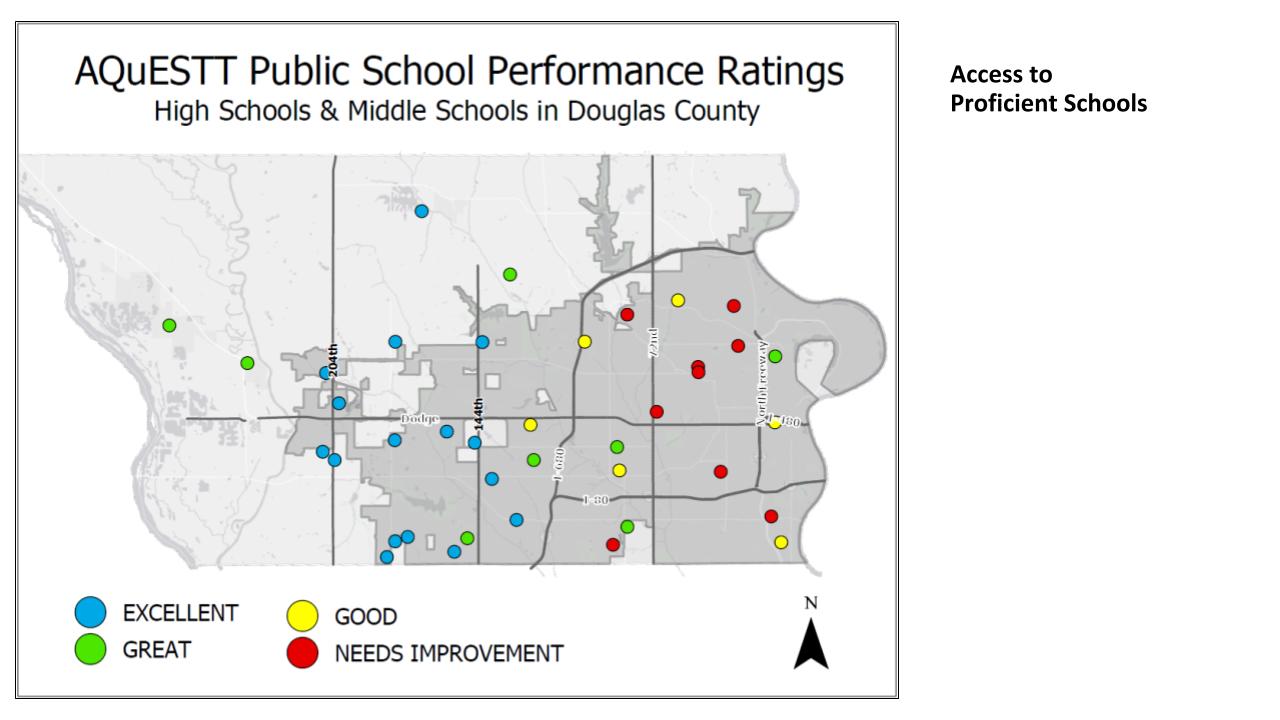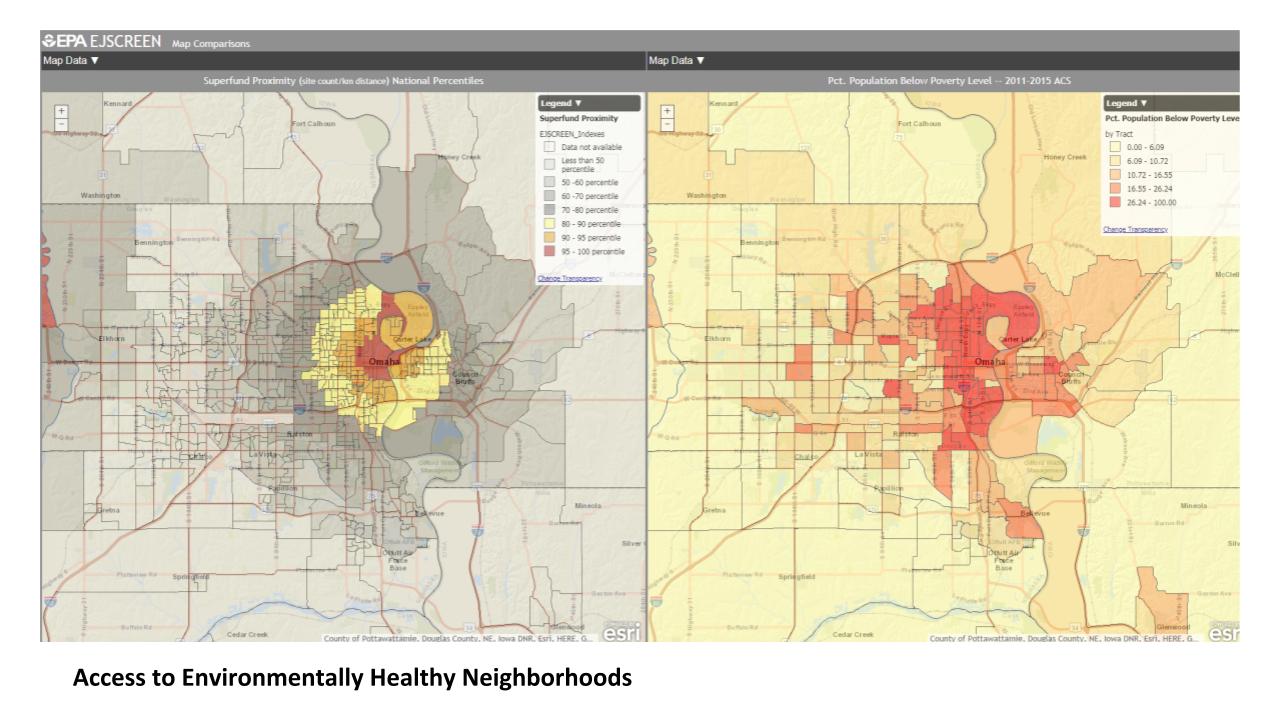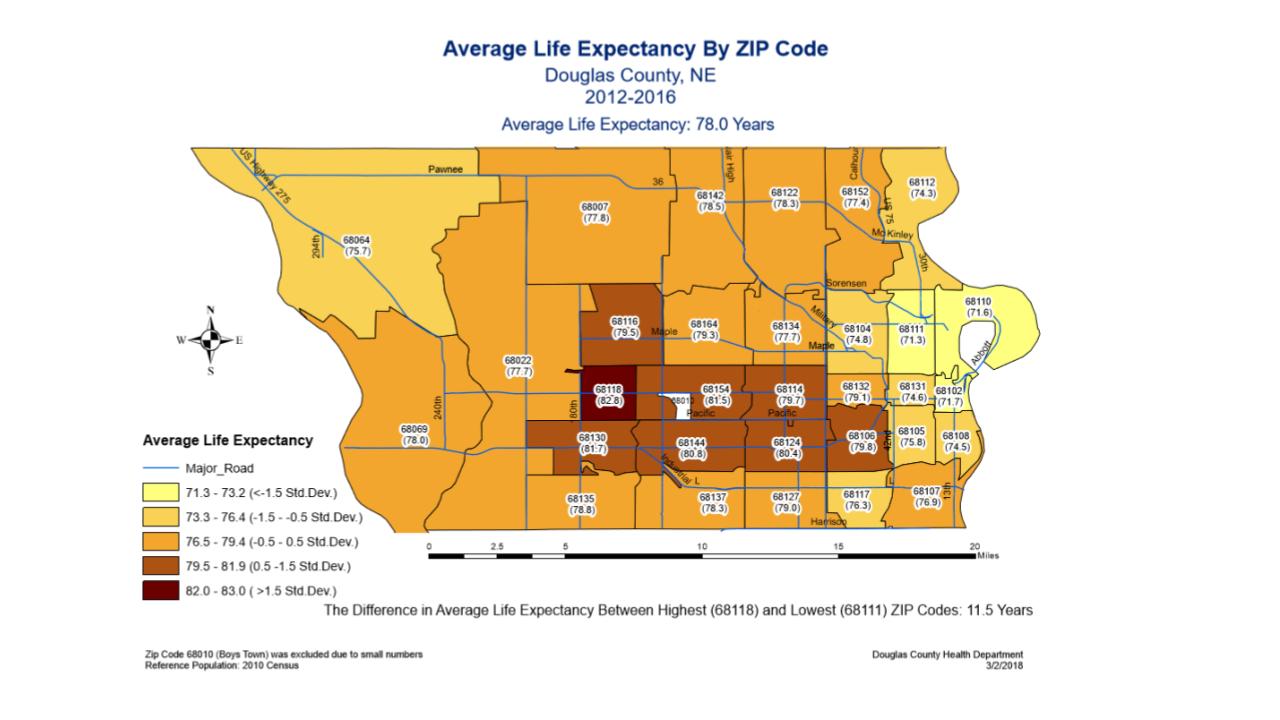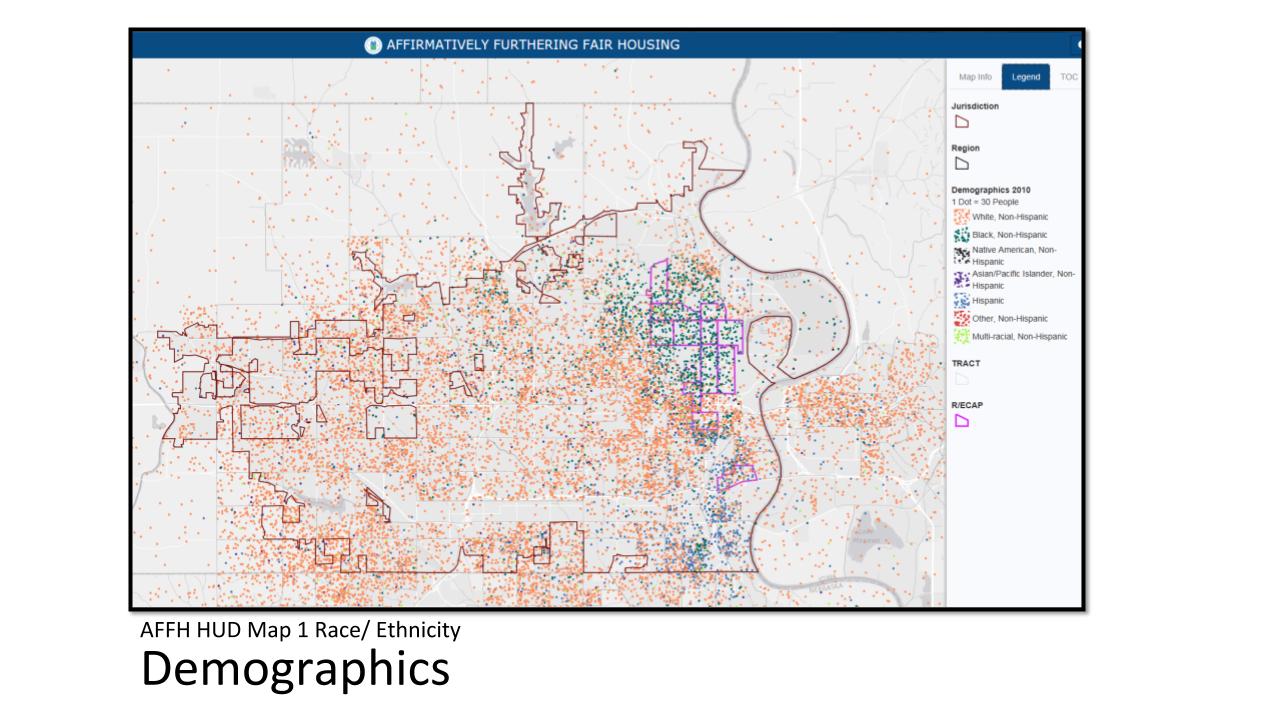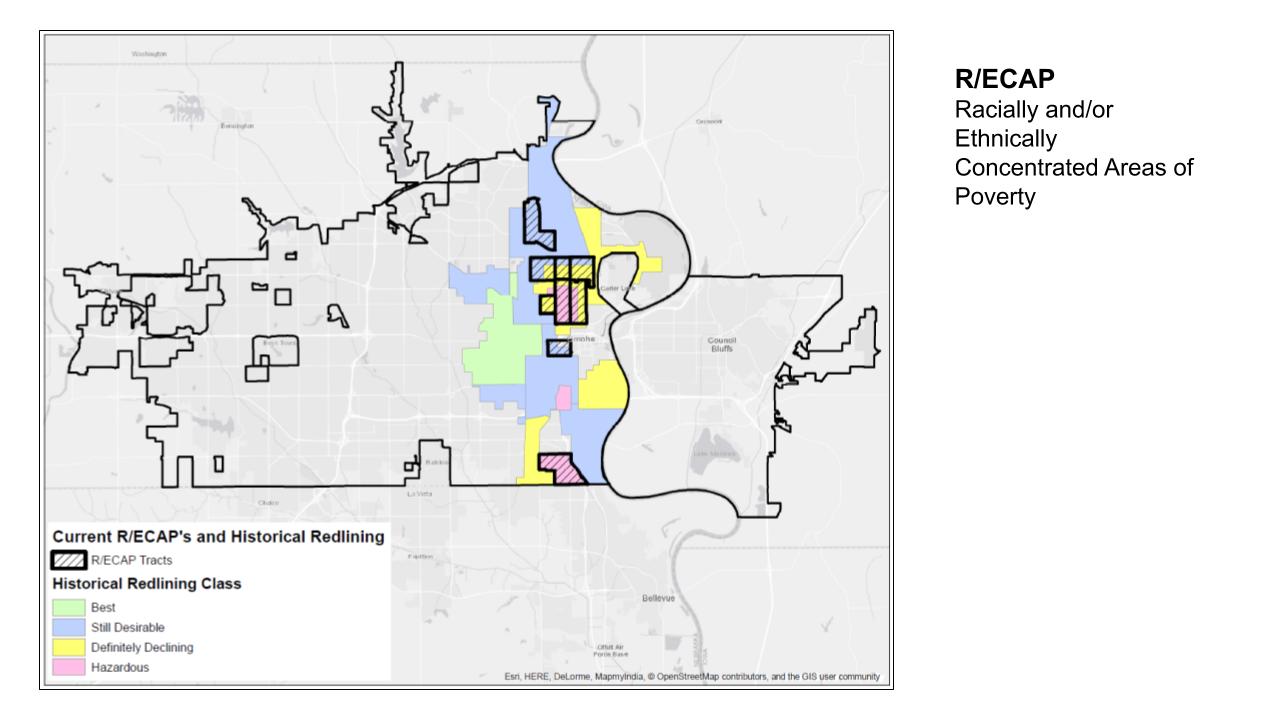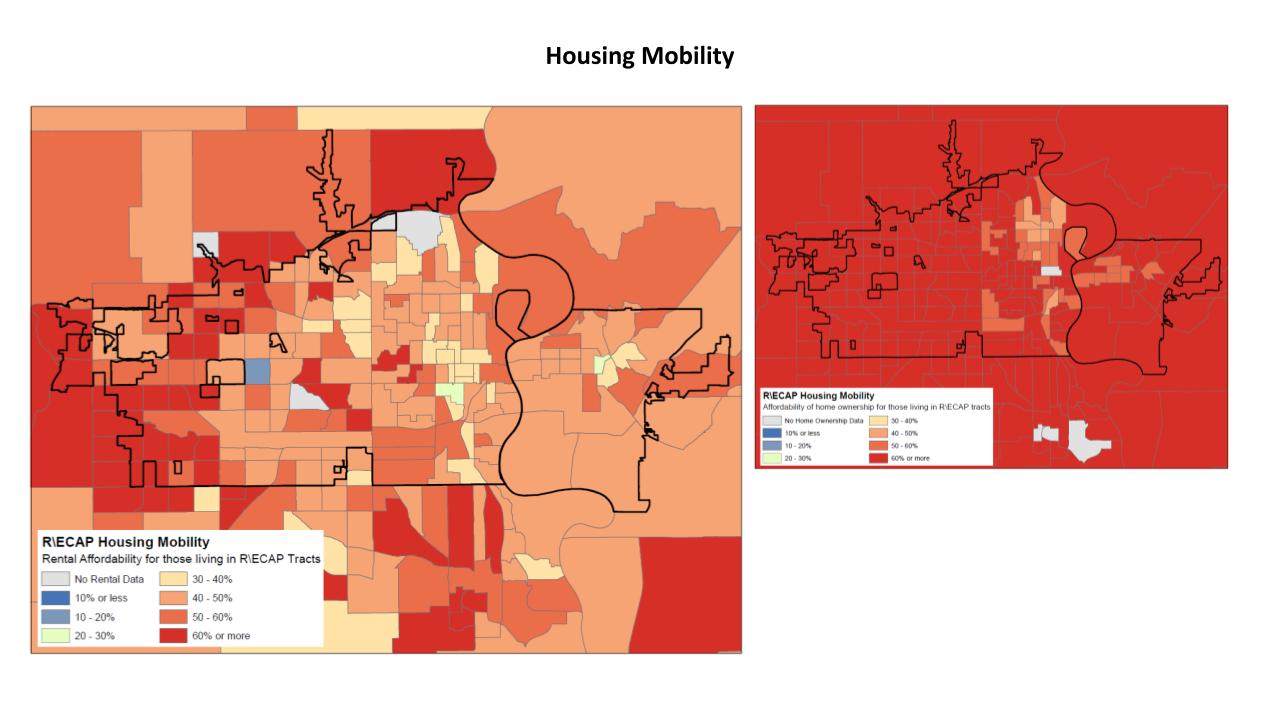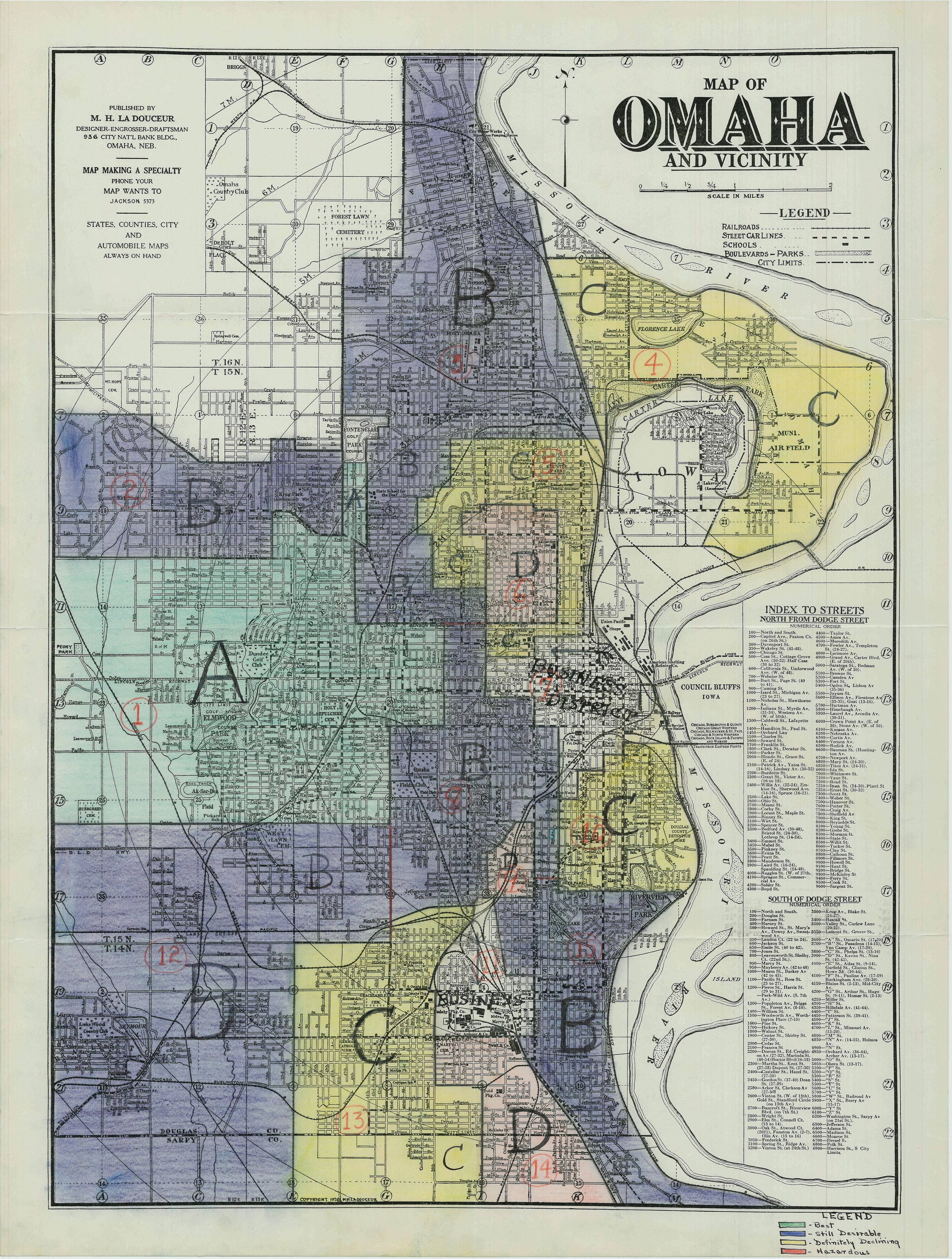Omaha Redlining Resource Guide
Brief Redlining Introduction
1937 Home Owner’s Loan Corporation (HOLC) Map of Omaha
The history of Redlining is the history of the Great American City. President Franklin D. Roosevelt unveiled The New Deal after the Great Depression which led to the creation of Home Owner’s Loan Corporation (HOLC). HOLC commissioned maps using color code and a letter grade to spur refinancing of millions of homes. Assessors for the agency rated neighborhoods by housing stock, sales and rental capacity, terrain, and “threat of infiltration of foreign-born, negro, and lower grade population.”
These maps aided in the investment in some areas, devaluation of others, and ultimately reinforced the phantom borders of segregation we recognize today.
Introductory Resources about Redlining
Where to find historical redlining maps of your city - Slate
The Racist Housing Policy That Made Your Neighborhood - The Atlantic
The devaluation of assets in black neighborhoods - Brookings
Redlining Omaha Blog Four: Reuter - Stepping into the Map
A History of Redlining in Omaha - North Omaha History
Crime in Omaha - Anonymous
Why Cities Are Still So Segregated - NPR
A 'Forgotten History' Of How The U.S. Government Segregated America - NPR
Zora J Murff Explores the Effects of Redlining on Omaha’s Black Communities - Fotoroom
Creighton University: Dr. Palma Strand, Richard Rothstein, The Color of Law
Dr. Palma Strand, professor at Creighton University School of Law, wrote an article entitled “MIRROR, MIRROR, ON THE WALL . . .”: REFLECTIONS ON FAIRNESS AND HOUSING IN THE OMAHA COUNCIL BLUFFS REGION reflecting on the United States’ deliberate funding of housing segregation, the promulgation of White suburbs, and fair housing across the country and in Omaha.
Housing discrimination has been against the law since the signing of the 1968 Fair Housing Act, yet many institutions maintain inequity in policies and procedures that still currently impact communities.
The Color of Law: A Forgotten History of How Our Government Segregated America by Richard Rothstein explicitly details the trajectory of U.S. housing disintegration and subsidization of segregation. Rothstein gave a lecture at Creighton University in April 2019, his speech described how decisions made over 80 years ago maintain much of the racial inequity we see today.
“African-American wealth is ten percent of white wealth, and that enormous disparity between the 60 percent income ratio and the 10 percent wealth ratio is entirely attributable to unconstitutional federal housing policy that was practiced in the mid-20th century and that’s never been remedied,” said Rothstein.
We spoke to attendees to get their perspective on Rothstein’s lecture. Angela Hardin with the National Black Catholic Congress of the Omaha Archdiocese shared her thoughts:
“I think for me, the major takeaway, as a black woman, and knowing how things were then and how are things are now, is that there are things we can overcome and no matter what there’s gonna be segregation but it’s always up to us to do better and do the best that we can and try to get ahead on our own and not rely on the federal government for that.”
Affirmatively Furthering Fair Housing (AFFH)
AFFH is part of the Fair Housing Act of 1968. Through the AFFH Final Rule, the Department of Housing and Urban Development (HUD) claims to advance efforts to break down barriers to opportunity in communities supported by HUD funds.
The AFFH Final Rule sets out a framework for local governments, States and Insular Areas, and public housing agencies (PHAs) to take meaningful actions to overcome historic patterns of segregation, promote fair housing choice, and foster inclusive communities that are free from discrimination.
Specifically, Affirmatively Furthering Fair Housing means taking meaningful actions that:
- address significant disparities in housing needs and in access to opportunity
- replace segregated living patterns with truly integrated and balanced living patterns
- transform racially and ethnically concentrated areas of poverty into areas of opportunity
- foster and maintain compliance with civil rights and fair housing laws
Source: AFFH - City of Omaha
AFFH Postponed
A current map of Omaha overlaid with the historically redlined class areas. Bold and lined areas represent places of high poverty and significant concentrations of non-white communities.
HUD published a notice in the Federal Register on January 5 suspending most local governments’ obligation under the Affirmatively Furthering Fair Housing (AFFH) rule to submit an Assessment of Fair Housing (AFH) until after October 31, 2020, and in many cases after 2025. The AFFH rule requires local governments to conduct an Assessment of Fair Housing using an “Assessment Tool” to assist them in meeting their obligation to affirmatively further fair housing. The suspension effectively postpones implementation of the AFFH rule until 2025 for a large majority of jurisdictions. Based on a review of the first 49 AFH initial submissions, HUD claims that many local governments need additional time and technical assistance to adjust to the AFFH process instituted in 2015.
Three advocacy organizations filed suit against HUD for suspending until October 31, 2020, the obligation of jurisdictions to submit an Assessment of Fair Housing (AFH) as required by the Affirmatively Furthering Fair Housing (AFFH) rule. The January 5, 2018 suspension, in essence, suspends the entire AFFH rule for more than 900 jurisdictions (out of 1,200) until 2024 or 2025 (see Memo, 1/8). The National Fair Housing Alliance, Texas Low Income Housing Information Services (Texas Housers), and Texas Appleseed filed their legal complaint on May 8, 2018.
The plaintiffs assert that HUD violated the Administrative Procedure Act (APA) in three ways:
HUD failed to provide public notice and comment before suspending the AFFH rule’s requirement for jurisdictions to submit an AFH.
HUD acted in an arbitrary and capricious manner because it did not provide a reasoned basis for the suspension.
HUD abdicated its duty under the Fair Housing Act to ensure that recipients of HUD funds affirmatively further fair housing.
Source: National Low Income Housing Coalition
Undesign the Redline
Designing the We, New York City-based organization, contends with the history and impact of redlining through a process they call “Undesign the Redline” where they meet with communities across the country to gather oral histories, documentation, and current implications to devise an exhibit that outlines the powerful effects of redlining while exploring solutions for remediation and reconciliation.
The Union for Contemporary Art, in collaboration with other community partners, is hosting Undesign the Redline in Omaha with plans to open July 26, 2019 from 6 to 8 pm.
The process of “Undesign” gathers community members, organizations, and other stakeholders together to dissect the intersecting roles of people, place, and policy.
Designing the We describes Undesign the Redline as: “a framework for unearthing our most deep, systemic and entangled crises. This interactive exhibit, workshop series and curriculum explores the history of structural racism and classism, how these designs compounded each other from 1938 Redlining maps until today, and how WE can come together to undesign these systems with intentionality.”
Source: Designing the WE
UNO Service Learning Academy
The University of Nebraska-Omaha Service Learning Academy has begun facilitating discussions around the creation and impact of redlining with university faculty, staff, Omaha-area P-12 educators, and community partners. SLA Director, Julie Dierberger, says she believes “the context of our community and its inequitable access to resources has deep roots beyond our own personal perceptions.”
Beginning in February 2019, SLA hosted a Redlining Discussion which included a bus tour to areas in North and South Omaha that were historically redlined based upon the HOLC map. Places of historic importance were identified while noting the difference in infrastructural and cultural investment over the last several decades. The workshop concluded with participants posing ideas for projects, potential collaborations, and lesson plan ideas to share the information with their students.
July 2019, SLA followed up the inaugural workshop and tour with a week-long seminar exploring a breadth of subject matters, concluding with redlining and its impacts on health, education, and social justice. February attendees were invited back for a reception to revisit ideas and make new connections to carry the work forward.
SLA will continue to work with P-12 teachers, UNO faculty, and community partners to develop opportunities to educate P-16 students about redlining and engage students in service-learning projects that directly address current day impacts of redlining in Omaha.
Resource Maps
Live Well Omaha - Omaha Metro Area Health & Housing - Mapping Health and Social Data for Action
Maps below from City of Omaha or Douglas County
This is a developing resource. You can email sources, comments, or suggestions to noiseomaha@gmail.com

